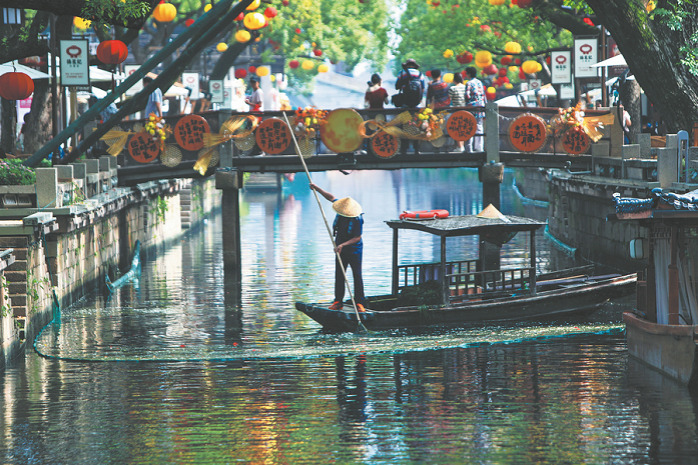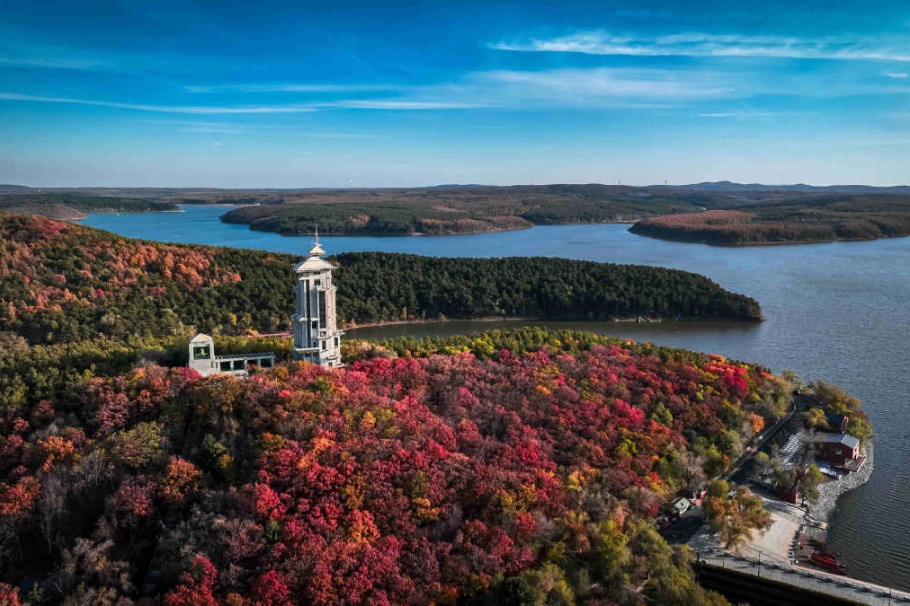Unearthing continent's civilized past

The West's colonization and plunder of Africa left very little evidence of the continent's past ways of life.
Consequently, Africans are sometimes seen by some as people who did not have a civilized past and culture. But all across Africa are sites that hold the secrets to the continent's forgotten history and stand as testimonies to lifestyles that were not only civilized but also culturally rich.
One such site hosts Ugandan kings' ancient tombs. The Kasubi Tombs were built in 1882 and converted into the royal burial ground in 1884. Four royal tombs lie within the main building, which is circular and topped by a dome.
The site demonstrates architectural achievements in the use of organic materials, such as wood, thatching, reeds, wattle and daub. But its primary significance lies in its intangible values of belief, spirituality, continuity and identity.
The Kasubi Tombs are a major spiritual center for the Baganda people of Uganda, as a place where traditional cultural practices have been preserved. It's the most active religious destination in the kingdom and hosts frequent rituals.
Its status as the burial ground for the previous four kings, or Kabakas, qualifies it as a religious center for the royal family, a place where the Kabaka and his representatives carry out important Buganda rituals.
Another site that offers a glimpse of Africa's rich past is Great Zimbabwe. Great Zimbabwe was the principal city in the 11th century of a major state extending over the gold-rich plateau. Its population exceeded 10,000 inhabitants.
Around 1450, the capital was abandoned because the hinterlands could no longer provide food for the overpopulated city and because of deforestation.
Archaeological excavations have found glass beads and porcelain from China and Persia, and Arab coins that testify to long-standing trade with the rest of the world. Other artifacts, including ceramic shards and ironware, offer further insight into its socioeconomic complexity, and its people's agricultural and pastoral activities.
Another monument of Africa's great past stands on two Tanzanian islands.
Located just off the country's coast, about 300 kilometers south of Dar es Salaam, are the remains of two port cities, Kilwa Kisiwani and Songo Mnara. The larger settlement, Kilwa Kisiwani, was occupied from the ninth to the 19th centuries and reached its peak of prosperity in the 13th and 14th centuries.
Trading cities
Kilwa Kisiwani and Songo Mnara were Swahili trading cities. Their prosperity was based on control of Indian Ocean trade with Arabia, India and China, particularly between the 13th and 16th centuries, when gold and ivory from the hinterland were traded for silver, carnelians, perfumes, Persian faience and Chinese porcelain.
Kilwa Kisiwani minted its own currency from the 11th to 14th centuries. In the 16th century, the Portuguese established a fort on Kilwa Kisiwani, and the decline of the two islands began.
The islands of Kilwa Kisiwani and Songo Mnara bear exceptional testimony to the expansion of Swahili coastal culture, the spread of Islam in eastern Africa and the extensive and prosperous Indian Ocean trade from the medieval period up to the modern era.
In Ethiopia, the ruins of the ancient city of Aksum close to Ethiopia's northern border mark the location of the heart of ancient Ethiopia, when the kingdom of Aksum was the most powerful state.
The massive complex, dating from the first to the 13th century, includes monolithic obelisks, royal tombs and the ruins of ancient castles. Long after its political decline in the 10th century, Ethiopian emperors continued to be crowned in Aksum. Aksum's ruins symbolize the wealth and significance of the ancient Aksumite kingdom's civilization.
In western Africa, Togo hosts the magnificent caves of Nok and Mamproug, which contain over 300 mostly defensive structures built between the 17th and 19th centuries.
The cylindrical and oblong constructions open upward and stand up to 2.5 meters high. The clay, straw and stones edifices protected harvests from plunder.
This site was added to the UNESCO World Heritage Tentative Lists' cultural category in 2000. Nok in the local language means "hidden", which still describes this incredible site where visitors can explore and interact with the rich, somewhat unknown, history of northern Togo's ethnic groups.
Although most of the area was looted, arrows and quivers can still be found among pottery shards. Over 150 jars used to store millet and sorghum are still intact.
In the middle of the area is a long, angled rock where the leaders would sit to weave tales of the bravery of their people in evading slave traders.
South Africa's 75,000-year-old Adam's Calendar is a series of circular monoliths said to be the oldest human-made structure on Earth.
They are among an estimated 1 million ancient stone ruins scattered throughout southern Africa's mountains.
Johan Heine, who discovered the stones in 2003, believes that Adam's Calendar is the flagship of such ruins and that it remains accurate as a calendar following the shadow of the setting sun cast by the central monolith onto an adjacent flat calendar stone.
Like many other ancient sites, it continues to track the advancement of advanced African civilizations over time.

































